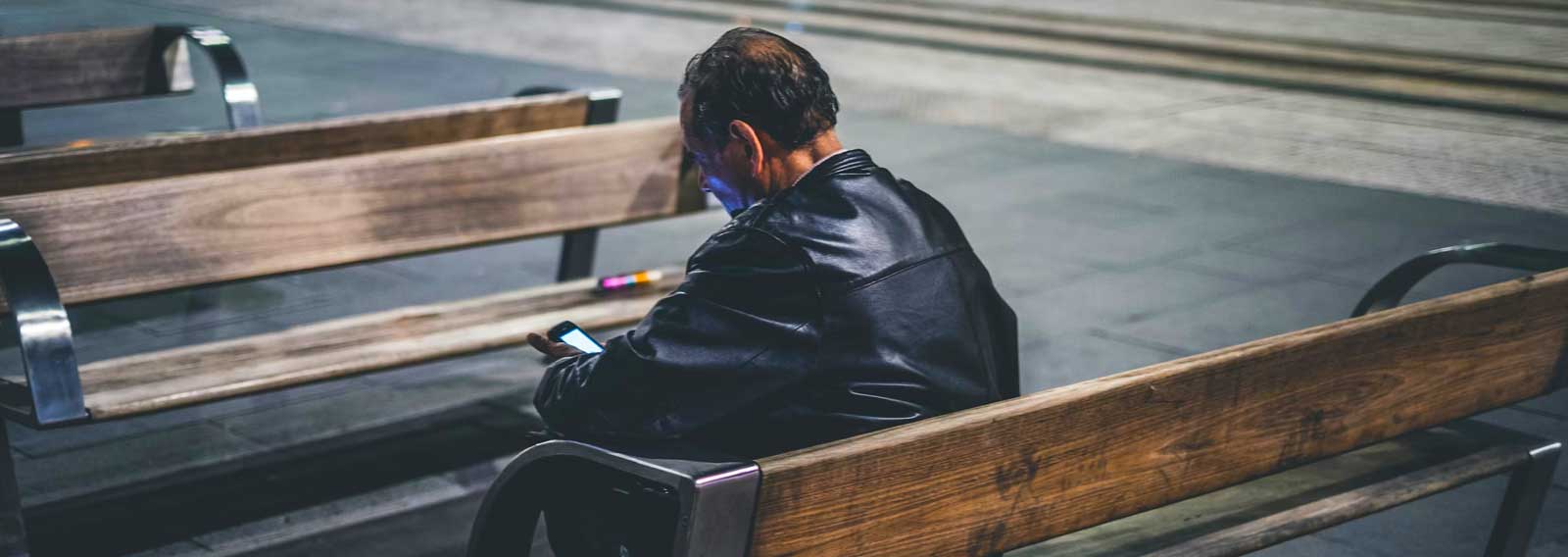Lockdowns must work, mustn’t they? They have to work, nearly every country in the world is using them to fight against SARS-Cov-2, therefore they must work. There is no way that so many countries could be using the wrong method to address this issue. Just like charges into machine gun nests must have worked because every nation did that during World War I.
It is not possible for so many nations of the world to get things wrong, for a sustained period of time, is it? I mean, just one more charge, surely is all it would have taken to break the enemy lines. Just one more charge with more men and braver men is all they needed to do, right? Of course, we know what actually happened, virtually every one of those charges failed. Every single army ground to a halt, and eventually, Germany and its allies surrendered because of sheer inter-nation-wide exhaustion.
But maybe those constant charges into machine gun nests did work…from a certain point of view. Because, if by work you mean the nations with the greatest access to men and resources who were left sort of standing at the end won the war, I guess you could argue that these famously inefficient and costly methods worked. In fact, you would have to say that they did. But at what cost? We know there were massive and real long term effects of the national policies of World War I, that flowed on for really the rest of the century.
Also, it is not like the generals in charge were not following the correct knowledge (aka military science) of their day, they were. Even a brief study of military history from say A History of Strategy: From Sun Tzu To William S. Lind, by Martin Van Creveld[1], shows that the generals of that era were thoroughly schooled in many of the best theories of war. Sadly none of that meant much for the men on the battlefield.
Many scholars of military tactics may have outlined the advantages of concentrating men and even cavalry forces in a determined attack to overwhelm the defence’s position. In the age before water-cooled machine guns, their advice was good, but it would take a long time for offensive technology to equalize with defensive technology for advice in this regard to be helpful to the average soldier in the lines again. Yet, many generals learnt this very slowly. I am sure it was incredibly hard for people to have this conversation about tactics at the time. After all, the general’s knowledge and power over the war was near-absolute.
A similar phenomenon appears to be happening today with Covid lockdowns. This is a particularly hard conversation to have, because people have simply just fractured down ideological lines, and drawn their trenches in the sand, about what they believe. Indeed, as of the day of me writing this very piece, there are Premiers still using lockdowns in Australian states, in very much the same manner as they did way back in March 2020. As if there has been very little learnt in the ensuing months.
But there are very good reasons, – scientific, observational, data-based reasons – to question hard lockdowns, and this is what I want to do today. But rather than just drawing from one study that supports my position, what I want to do is look at a broad range of studies from way back in the middle of 2020, right on through to studies concluded in the last couple of weeks of 2021. I want to show that as our knowledge of lockdowns and their effects increase, the case for their effectiveness and morality diminishes.
It is not March 2020 anymore, it is nearly March 2021 and observational scientists have learnt a lot from the last year. This research was accessed through reputable online journal sources, and though there are also popular articles to supplement this data, this represents a broad swath of the best research to date from sources like the Lancet, Nature and other online journal aggregators, including one source I found through the Queensland State Library.
I want to go through these research pieces briefly in chronological order, showing their main conclusions and points, and allow you, the reader, to make an informed decision about whether or not our hard lockdowns are still the best practice.
Study 1: Chaudhry, Rabail (et al.) 2020, “A country-level analysis measuring the impact of government actions, country preparedness and socioeconomic factors on COVID-19 mortality and related health outcomes”, The Lancet, published 21st of July 2020.[2]
This was a relatively early study and the researchers who wrote this one note that their data was limited, because of the still relatively early nature of the pandemic. However, the study makes some interesting findings. It found that the biggest risk factors for a society regarding Covid were obesity and age, “Consistent with reported COVID-19 outcome data from Europe, the United States, and China, higher caseloads and overall mortality were associated with comorbidities such as obesity, and advanced population age.”[3]
They found that lockdowns were helpful in limiting the peak of the virus so that the health system could cope with the cases. Which was a valid concern of many at the time. But it would follow that once your health system was adequately prepared, then lockdowns should be less necessary right? However, they observed that lockdowns did help recovery rates, which makes sense, especially for countries with overwhelmed health systems, which at this stage there were some in this situation, like Italy, or cities in countries like New York in the USA.
Overall, their analysis of lockdowns was cautious –
These findings suggest that more restrictive public health practices may indeed be associated with less transmission and better outcomes. However, in our analysis, full lockdowns and wide-spread COVID-19 testing were not associated with reductions in the number of critical cases or overall mortality.[4]
Perhaps their most interesting finding was which countries were the most affected by the virus,
The findings of this country level analysis on COVID-19 related health outcomes suggest that low levels of national preparedness, scale of testing, as well as population characteristics such as obesity, advanced age and higher per capita GDP are associated with increased national case load and mortality.[5]
I know I had many friends at the beginning of this crisis who were worried about poorer countries and their ability to withstand the virus, but as of July 2020, the countries who were most adversely affected were those with the larger proportion of overweight and wealthy elderly people. We all have known for some time that this virus affects the elderly the worst, but this convergence of factors with wealth is surprising.
As this study was done in July 2020, early in our understanding of the virus, the writers wisely note, that their “…findings propose avenues for further debate, research, and exploration, and do not support a definitive judgement on the effectiveness of various public health interventions implemented across different countries.”[6] More data is necessary.
Study 2: Han, Emeline (et al.) 2020 “Lessons learnt from easing COVID-19 restrictions: an analysis of countries and regions in Asia Pacific and Europe”, The Lancet, published 24th September 2020.[7]
This research paper was, overall, more positive regarding lockdowns, and also was very positive towards face coverings. However, it appears to be strongly encouraging proportional use of these strategies. Indeed, its emphasis was how to move out of lockdown, so as to make it as effective as possible, negating the need for further lockdowns.
The authors of this study believed that lockdowns had been effective, but their support of their effectiveness came with caveats,
Although such measures might have saved lives, they have come at a heavy socioeconomic cost. The World Bank’s projections point to the deepest global recession since World War 2, with millions of people falling into unemployment and poverty. Lockdowns and other extreme restrictions cannot be sustained for the long term in the hope that there will be an effective vaccine or treatment for COVID-19. Rather, these restrictions give time for countries to reduce the incidence of disease and put in place robust, yet sustainable, measures to prevent and control transmission.[8]
Of course, this article was written before emergency use of various vaccines was approved in nations like the UK, US and others. But it notes, as does the previous article, that lockdowns come at a serious cost. It also takes a consultative approach, that many feel our governments have not practiced,
For societies to reopen safely, communities should be fully engaged and empowered to protect themselves from the virus and the effect of the crisis, especially the most vulnerable populations (figure 2). Ideally, authorities should ensure that they fully understand the reality of the situation faced by the people affected by their decisions, drawing on principles of co-production of policy. Advice should also be consistent and credible.[9]
Again, the researchers note that a prepared medical system makes an incredible difference, but importantly they appear to imply that the existence of a vaccine should negate nonpharmaceutical interventions (i.e. lockdowns, etc). So, if lockdowns are questionably effective without vaccines, why are we even entertaining the idea of them remaining with the vaccines?[10]
Perhaps, because of this, “There is increasing realisation that removing COVID-19 restrictions is not about returning to the pre-pandemic normal but about gradually and cautiously transitioning to a new normal, while being ready to reimpose measures if, and when, necessary.”[11]
Note, that this is a quote from a reputable scientific journal, and it really makes you wonder. Perhaps, to give them the benefit of the doubt, they may say otherwise now that vaccines are on the horizon for many countries. But again, this makes me wonder, why must lockdowns continue after vaccines have rolled out to the very vulnerable?
Study 3: Cauchemez, Simon (et al.), 2020, “Lockdown impact on COVID-19 epidemics in regions across metropolitan France”, The Lancet, published 29th of September 2020.[12]
This paper is perhaps the most pro-lockdown of all the papers I will mention in this article, at least it appears to be until you note something very important about why it is pro-lockdown.
The author’s note,
Since the different regions were at different stages of the pandemic at the time the lockdown was implemented, the synchrony in regional peaks strongly suggests that the lockdown, rather than the natural course of the epidemic, explains the peak in hospital admissions. Moreover, most regions were experiencing exponential growth in hospital admissions (appendix), such that saturation of local intensive care units might have occurred in those regions in the absence of any lockdown…
Lockdown, therefore, appears to have been successful not only in alleviating the burden on the intensive care units of the two most severely affected regions of France but also in preventing uncontrolled epidemics in other regions. These simple observations support results from other studies which have estimated the impact of lockdown on SARS-CoV-2 spread to be strong.[13]
This appears to be a pretty lock-tight argument in favour of lockdowns. However, then you read this,
Enforcement of public health and social measures in combination with important testing, tracing, and isolating capacities will be critical in case of an epidemic rebound to avoid re-introducing a lockdown—a situation for which the economic cost and broader impact on society are considerable.[14]
So, their argument in favour of using lockdown was contingent on the lockdown being done in such a way as to PREVENT other lockdowns. They saw this as incredibly important, because “the economic cost and broader impact on society are considerable.”
We must note that this study was published in September 2020, and we can now say that the early lockdowns did not prevent future lockdowns, they simply set the precedent for continuing to lockdown societies in a rolling manner. One wonders what the authors of this article would go on to tell us about the ongoing costs to society of these lockdowns. But really, you don’t have to wonder, because other scientists have done that analysis. Let’s observe as we go along.
Study 4: Fagih, Al (et al.) 2020, “Remotely monitored inactivity due to COVID-19 lockdowns. Potential hazard for heart failure patients”, Saudi Arabia: Saudi Medical Journal, published November 2020.[15] (accessed through the Qld State Library).
Just to illustrate the negative effects of lockdown, our next article, of which I was only able to access the summary, was done specifically to ascertain the impacts “on the physical activity in patients of heart failure implanted with cardiac implantable electronic devices (CIEDs).”[16]
Their findings were significant for these patients,
Eighty-two patients with heart failure were included. The median age was 65 years (58-72), and 53 (64.6%) subjects were men. There was a 27.1% decline in physical activity, and the median physical activity of patients significantly declined from 2.4 to 1.8 hours/day (p=0.000010). Conclusion: Data obtained by remotely monitored CIED in heart failure patients suggests a significant decline in physical activity during the country lockdown due to the pandemic. Awareness of the future potential hazards in this group of patients is warranted.[17] (emphasis mine).
The broad application of these lockdowns did have, and where they are still being applied, continue to have negative impacts on all sorts of other medical issues. Shutting down society does not shut down people’s need for proper medical care, or social care, or various other forms of care.
Humans are social creatures, and there is a pretty consistent theme in many of these papers that an awareness of the effects of cutting people off from society, for short or extended periods, can have unintended consequences.
Study 5: Gurdasani, Deepti (et al.) 2020, “The UK needs a sustainable strategy for COVID-19”, The Lancet, published 9th November 2020.[18]
This article argued for more effective responses to the pandemic management across all levels of society, including better funding and co-ordination for testing and tracing, better financial support, better communication with the population, better funding for hospitals, better regulations around schools, and much, much more. It is less of a paper on the effects of lockdowns, and more a wish-list for how the writers would like the pandemic to be managed in future. Their desires for how the situation should be handled are summarized in this graphic here.
For some reason this paper delves into racism and equality laws. What that has to do with controlling the spread of the pandemic is beyond me, and beyond the scope of this article. But it does speak to an interesting progressive bent of the writers. Indeed, there does appear to be a strong socialist bent in their wish-list. Maybe a case of never let a good crisis go to waste? However, even if this is the case, these scientists make valid observations based on solid reasons.
Interestingly, for those in Australia who have already had to experience short, sharp lockdowns, this paper is in favour of their use to limit spread,
On Sept 21, 2020, the Scientific Advisory Group for Emergencies (SAGE) advised the UK Government to institute a circuit breaker in England to suppress the epidemic. Instead, the government opted for several weeks of ineffective local tiered restrictions, and cases continued to rise exponentially. Finally, on Oct 31, 2020, the government announced a 4-week national lockdown commencing on Nov 5, 2020.[19]
However, unlike in Australia, cases were not in the single digits, but rising rather rapidly. Even still, their conclusion on lockdowns is consistent with many of our papers so far,
Lockdowns are last resort measures that reflect a failure of the pandemic control strategy. They have massive impacts on the population and the economy. To avoid repeated lockdowns and their impacts, we need a sustainable COVID-19 public health strategy. Here, we make seven evidence-based recommendations (a schematic representation is available in the appendix).”[20]
They a referring here to the PDF linked above. I think it is important to note the somewhat leftist leaning nature of this paper, as it shows that criticizing lockdowns is not a right-wing cause. Scientists from across the spectrum are noting that there are other ways to manage this pandemic, and really, as time goes on, our strategies should be modified to suit the experiences and data gathered so far.
Study 6: Haug, Nils (et al.) 2020, “Ranking the effectiveness of worldwide COVID-19 government interventions”, Nature, published 16th November 2020.[21]
In my opinion, this is one of the most important studies done to this date, ascertaining the effectiveness of lockdowns. Because it helps bridge the gap, to a degree, between those who are pro and anti lockdowns. It is hard to convince people that lockdowns don’t achieve anything because that is very counterintuitive.
We all know that if your co-worker who has the flu comes to work, they are going to share it, with at least some people. But if they stay home, they will more likely keep it to themselves. Ergo, doing this society-wide must work.
But when you listen to educated people talk about why lockdowns don’t work, what they are really saying is that you can achieve the same results without such extreme measures and the negative impacts on society. That is why this study is so important, it makes this case in the raw data, showing that you can achieve similar effects to lockdowns, with more reserved methods.
As the researchers note,
Assessing the effectiveness of non-pharmaceutical interventions (NPIs) to mitigate the spread of SARS-CoV-2 is critical to inform future preparedness response plans. Here we quantify the impact of 6,068 hierarchically coded NPIs implemented in 79 territories on the effective reproduction number, Rt, of COVID-19.[22]
What they found is vitally important for the health of our country as we move forward with this virus,
Our results indicate that a suitable combination of NPIs is necessary to curb the spread of the virus. Less disruptive and costly NPIs can be as effective as more intrusive, drastic, ones (for example, a national lockdown)…In the absence of vaccines and antiviral medication, non-pharmaceutical interventions (NPIs) implemented in response to (emerging) epidemic respiratory viruses are the only option available to delay and moderate the spread of the virus in a population.[23]
So, these researchers are not saying that lockdowns do not help to stop the spread of the virus, indeed they say the measures which have the largest impacts are stopping small gatherings, closing schools, border restrictions, increasing public health capacities (especially access to PPE for health care workers), restricting movement, and national lockdown,[24] all strict measures. This combination of measures can slow the virus down, obviously.
What is fascinating is what they see as the least effective,
Among the least effective interventions we find: government actions to provide or receive international help, measures to enhance testing capacity or improve case detection strategy (which can be expected to lead to a short-term rise in cases), tracing and tracking measures as well as land border and airport health checks and environmental cleaning.[25]
So, to those who are not in favour of lockdowns, this would appear to be a disheartening find, because his research paper found that these harsh measures achieve the effects they intend. Discouraging right? Well, only if you stop reading here — because they go on to say,
However, such radical measures have adverse consequences. School closure interrupts learning and can lead to poor nutrition, stress and social isolation in children. Home confinement has strongly increased the rate of domestic violence in many countries, with a huge impact on women and children while it has also limited the access to long-term care such as chemotherapy, with substantial impacts on patients’ health and survival chance. Governments may have to look towards less stringent measures, encompassing maximum effective prevention but enabling an acceptable balance between benefits and drawbacks…
…This conclusion does not rule out the effectiveness of an early national lockdown, but suggests that a suitable combination (sequence and time of implementation) of a smaller package of such measures can substitute for a full lockdown in terms of effectiveness, while reducing adverse impacts on society, the economy, the humanitarian response system and the environment…
…Taken together, the social distancing and movement-restriction measures discussed above can therefore be seen as the ‘nuclear option’ of NPIs: highly effective but causing substantial collateral damages to society, the economy, trade and human rights…
…We find strong support for the effectiveness of border restrictions. The role of travelling in the global spread of respiratory diseases proved central during the first SARS epidemic (2002–2003)42, but travelling restrictions show a large impact on trade, economy and the humanitarian response system globally. The effectiveness of social distancing and travel restrictions is also in line with results from other studies that used different statistical approaches, epidemiological metrics, geographic coverage and NPI classification.[26]
So, close the national borders, encourage social distancing, enact more reasonable, less draconian measures, and you can have the same effect as a hard lockdown. Without all of the devastating negative effects mentioned above. What’s fascinating is that they found that communicating the seriousness of the situation, is highly effective, “Surprisingly, communicating on the importance of social distancing has been only marginally less effective than imposing distancing measures by law.”[27]
Perhaps the most important point of this paper though is the analogy it uses to refer to hard lockdowns – “the nuclear option”. It is disproportionate to the danger, and therefore should only be seen as a last resort. Health systems which have had a year to prepare, and societies which are willing to be flexible with their leaders, should not have to endure lockdowns, because less harmful measures can be just as effective. I highly recommend reading this paper.
Study 7: (An article) – Miltimore, Jon 2020, “3 Studies That Show Lockdowns Are Ineffective at Slowing COVID-19: The collateral damage of lockdowns is well documented. Their benefits, however, remain murky”, Fee, published 9th November 2020.[28]
Unlike all of my other studies so far, this is an article that refers to three studies, one of which we looked at above from Lancet. I share this because it allows you to read three other studies from an article with a similar structure to mine, only much shorter.
Here is what Miltimore says,
1. The Lancet, July
A study published on July 21 in The Lancet, a weekly peer-reviewed general medical journal founded in 1823, indicated that government lockdowns were ineffective…2. Frontiers in Public Health, November
Similarly, a study published by Frontiers in Public Health several months after The Lancet paper found neither lockdowns nor lockdown stringency were correlated with lower death rates. Researchers crunched data from 160 countries over the first 8 months of the pandemic, testing numerous factors—such as public health, demographics, government policy, economy, and environment—to determine how each correlated with COVID-19 mortality…3. Tel Aviv University Study, October
Research from Tel Aviv University published in October on the website medRxiv said that strict lockdowns may not save lives. Researchers analyzed mobility data collected from iPhones and found no statistical association between lockdown severity and the number of COVID-19 fatalities…[29]
All consistent with our finding so far.
Study 8: Garcia, Santiago (et al.) 2020, “The hidden costs of national lockdowns”, The Lancet, published 2nd of February 2020.[30]
This paper is similar to the Saudi Arabian study shared above. We have already seen virtually every paper we have looked at so far share the negative effects of lockdowns, here is another one,
COVID-19 has dramatically impacted healthcare delivery around the world. As hospitals systems prepared for the actual or perceived onslaught of COVID-19+ patients, measures were implemented that effectively discouraged or restricted patient access to outpatient care, and diagnostic and therapeutic cardiac procedures deemed elective.[31]
Notice that it notes “the measures” had these negative impacts.
Public fear of contracting COVID-19 in the hospital system, not disease burden or healthcare system overload, appears to be the main driver of the reduction in AMI presentations during the pandemic. In fact, dramatic decreases in emergency department volumes were also reported…
…National lockdowns were disruptive in nature but efforts to educate the public and maintain timely access to emergency care were important to minimize morbidity and mortality for patients with cardiovascular disease…
…Also, the recommendation to “self-quarantine” for 2 weeks when symptoms of COVID-19 were present (many indistinguishable from heart disease such as dyspnea and cough) likely led many patients to delay or forgo needed medical care…
…For governments considering additional lockdowns, approaches that preserve essential healthcare services and expand telemedicine capabilities, to include rural and institutionalized communities, are needed to avoid repeating the mistakes of the past…
At this stage of the pandemic, why are we still seeing governments put in place policies that discourage people from getting important healthcare, whether elective or urgent? Especially when certain conditions can share symptoms with Covid. The justification for hard lockdowns is getting thinner and thinner.
Study 9: Bendavid, Eran (et al.) 2020, “Assessing mandatory stay‐at‐home and business closure effects on the spread of COVID‐19” Wiley Online Library, published 5th January 2021.[32]
Although this paper is dated before the previous paper, I have left it to last, because it was reading the conclusions of this research that inspired me to write this article. Because really these researchers’ conclusions are the culmination of everything we have looked at thus far.
The authors of this article wanted to access the effectiveness of the most restrictive nonpharmaceutical interventions (mrNPI’s) with less restrictive pharmaceutical interventions (lrNPI’s). Why? Because mandatory stay at home orders and business closures have devastating, devastating effects. We know this now, indisputably.
Their conclusions are very simple, and profound,
While small benefits cannot be excluded, we do not find significant benefits on case growth of more restrictive NPIs. Similar reductions in case growth may be achievable with less‐restrictive interventions…
…Because of the potential harmful health effects of mrNPI—including hunger, 2 opioid‐related overdoses, missed vaccinations, increase in non‐COVID diseases from missed health services, domestic abuse, mental health and suicidality, and a host of economic consequences with health implications—it is increasingly recognized that their postulated benefits deserve careful study…
…In the framework of this analysis, there is no evidence that more restrictive nonpharmaceutical interventions (‘lockdowns’) contributed substantially to bending the curve of new cases in England, France, Germany, Iran, Italy, the Netherlands, Spain or the United States in early 2020…
NPIs can also have harms, besides any questionable benefits, and the harms may be more prominent for some NPIs than for others. For example, school closures may have very serious harms, estimated at an equivalent of 5.5 million life years for children in the United States during the spring school closures alone. Considerations of harms should play a prominent role in policy decisions, especially if an NPI is ineffective at reducing the spread of infections. Of note, Sweden did not close primary schools throughout 2020 as of this writing.”[33]
Wow! This is pretty conclusive, is it not? What have we done to our nations with these lockdowns?
Please read this paper, or at least the abstract, introduction and discussion. It outlines very clearly that the strictest of measures are not necessary to achieve favourable results with the spread of the virus.
To return to our World War I analogy at the beginning; no, another charge into established defences is not going to break the enemy lines. And while it may wear them down eventually, there are far less costly methods of achieving your goals. Which is why we never saw the same kind of trench warfare practiced in World War II.
But I have made a detailed case throughout this piece, let me put some names to the arguments.
Let me tell you about Andy Steels, who “tested negative on two occasions for Covid-19, despite developing a chesty cough around the same time the pandemic was taking its grip on the UK.”[34] It turned out that he had lung cancer. He died the day after his 54th birthday, because his cancer diagnosis was missed because of the lockdowns, and the focus away from normal healthcare. He was one of as many as 50,000 people who have missed a cancer diagnosis in the US.[35] Each one of those people has a name, and a family.
Then there is Hayden,
A 12-year-old Texas boy who felt “sad and lonely” amid the coronavirus lockdown measures hanged himself, his father revealed in a report about the tragedy…
…Hayden Hunstable, of Aledo, took his own life three days before his 13th birthday in April 2020 because he didn’t know how to deal with the isolation and depression when the emerging disease caused a nationwide shutdown, the UK’s Metro reported…
…The dad said his son was hit hard by the lockdown, which made it impossible to hang out with his friends, and took a strong dislike to virtual learning.[36]
This story breaks my heart. I am sure that this young boy had other issues in his life he was struggling with. But they were exacerbated by the lockdowns. What a tragedy.
A flaw in my article is that it can make you feel like these lockdowns and other measures just affect statistics, because that is what these scientists were analysing.
But behind every number is a person, a real person, being affected in real ways. And this young man is not alone, in Japan, during their second lockdown suicide rates increased by 49% among children and adolescents, and 37% among women.[37]
These lockdowns are affecting so many people in terrible ways, and this article only scratches the surface of those ramifications. But what cannot be denied is that they are real.
I understand our governmental leaders have a hard job. I think Australians have been very sympathetic to this fact, and understand the situation is hard. But how often have those who have questioned the lockdowns been told: don’t ignore the science.
Well, I think I have demonstrated conclusively that it is valid to question the lockdowns BECAUSE of the science. What do you think?
List of References:
[1] Creveld, Martin, 2015. A History of Strategy: From Sun Tzu To William S. Lind, Castalia House, Finland.
[2] Chaudhry, Rabail (et at.) 2020, “A country level analysis measuring the impact of government actions, country preparedness and socioeconomic factors on COVID-19 mortality and related health outcomes”, The Lancet, Open Access Published: July 21, 2020, https://www.thelancet.com/journals/eclinm/article/PIIS2589-5370(20)30208-X/fulltext , accessed 15/02/2021.
[3] ibid
[4] ibid
[5] Ibid
[6] Ibid.
[7] Han, Emeline (et al.) 2020, “Lessons learnt from easing COVID-19 restrictions: an analysis of countries and regions in Asia Pacific and Europe”, The Lancet, published 24th September 2020, https://www.thelancet.com/pdfs/journals/lancet/PIIS0140-6736(20)32007-9.pdf , accessed 15/02/2021/
[8] Ibid, 1525.
[9] Ibid, 1527.
[10] Maiden, Samantha 2021, “Coronavirus Australia: Prime Minister Scott Morrison issues chilling warning for the coming year” News.com.au https://www.news.com.au/finance/work/leaders/coronavirus-australia-prime-minister-scott-morrison-issues-chilling-warning-for-the-coming-year/news-story/3534a25fb5976d2ef4c4c60a31ccf09f, accessed 16/02/2021.
[11] Ibid, 1532.
[12]Cauchemez, Simon (et al.) 2020, “Lockdown impact on COVID-19 epidemics in regions across metropolitan France” The Lancet, Published: September 29, 2020, https://www.thelancet.com/article/S0140-6736(20)32034-1/fulltext , accessed 15/02/2020.
[13] Ibid.
[14] Ibid.
[15] Fagih, Al (et al.) 2020, “Remotely monitored inactivity due to COVID-19 lockdowns. Potential hazard for heart failure patients”, Saudi Medical Journal; ProQuest Central ; 2020-11, Vol.41 (11), p.1211-1216 , accessed via Queensland State Library, 15/02/2020.
[16] Ibid.
[17] Ibid.
[18] Gurdasani, Deepti (et al) 2020, “The UK needs a sustainable strategy for COVID-19”, The Lancet, published 8th of November 2020, https://www.thelancet.com/journals/lancet/article/PIIS0140-6736(20)32350-3/fulltext?utm_campaign=tlcoronavirus20&utm_content=148306669&utm_medium=social&utm_source=twitter&hss_channel=tw-27013292 , accessed 15/02/2020.
[19] Ibid.
[20] Ibid.
[21] Haug, Nils (et al.) 2020, “Ranking the effectiveness of worldwide COVID-19 government interventions”, Nature Human Behviour, volume 4, pp.1303-1312, published 16th November 2020, https://www.nature.com/articles/s41562-020-01009-0 , accessed 15/02/2020.
[22] Ibid.
[23] Ibid.
[24] Ibid.
[25] Ibid.
[26] Ibid.
[27] Ibid.
[28] Miltimore, John 2020, “3 Studies That Show Lockdowns Are Ineffective at Slowing COVID-19, The collateral damage of lockdowns is well documented. Their benefits, however, remain murky”, Fee, published 9th December 2020, https://fee.org/articles/3-studies-that-show-lockdowns-are-ineffective-at-slowing-covid-19/ , accessed 15/02/2020.
[29] Ibid.
[30] Garcia, Santiago (et al.) 2020, “The hidden costs of national lockdowns”, The Lancet, Published February 2nd 2021 https://www.thelancet.com/journals/lanepe/article/PIIS2666-7762(21)00012-0/fulltext , accessed 15/02/2020.
[31] Ibid.
[32] Bendavid, Eran (et al.) 2020, “Assessing mandatory stay‐at‐home and business closure effects on the spread of COVID‐19”, published 5th January 2020, https://onlinelibrary.wiley.com/doi/10.1111/eci.13484 , accessed 15/02/2020.
[33] Ibid.
[34] Pyman, Tom, 2020, “’Workaholic’ businessman, 54, dies after lung cancer was missed because he was unable to see his GP during the first coronavirus lockdown”, Daily Mail Australia, https://www.dailymail.co.uk/news/article-8961521/Businessmans-lung-cancer-missed-unable-GP-lockdown.html , accessed on the 16/02/2020.
[35] Ibid.
[36] Steinbuch, Yaron 2020, “Texas boy, 12, hangs himself after battling depression amid COVID-19”, New York Post, https://nypost.com/2021/02/11/texas-boy-hangs-himself-after-battling-depression-amid-covid/?fbclid=IwAR2QWhYYaeB4C8mFk7UFkqVRiHYsIoGOWwDq4Qon4U4Y9EMi58ymR-xMRbU , accessed 16/02/2020.
[37] Tanaka, Takanao (et al.) 2020, “Increase in suicide following an initial decline during the COVID-19 pandemic in Japan”, Nature Human Behaviour, https://www.nature.com/articles/s41562-020-01042-z , accessed 16/02/2020.






















